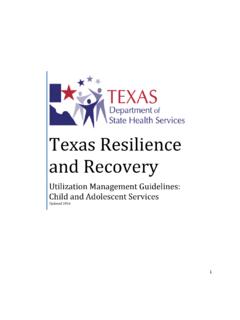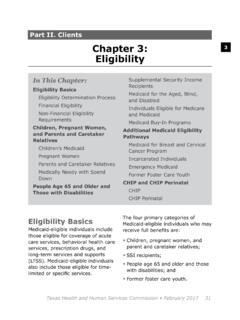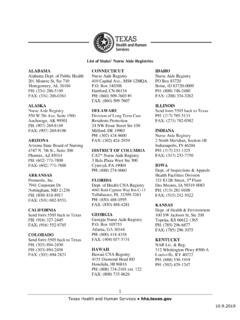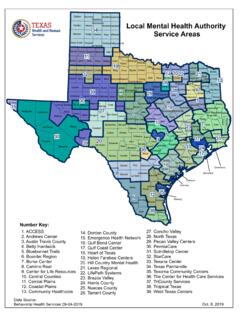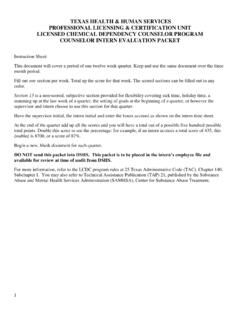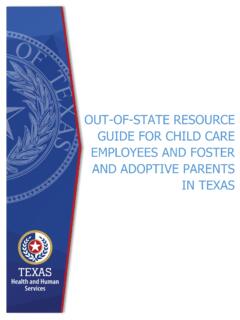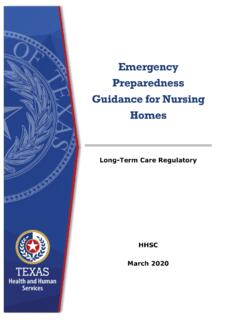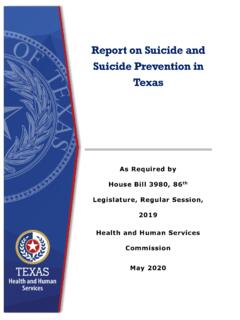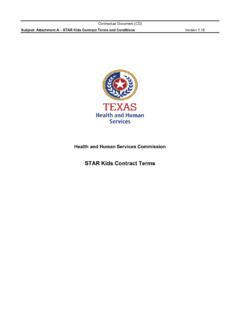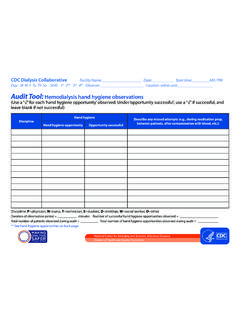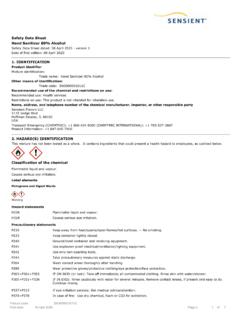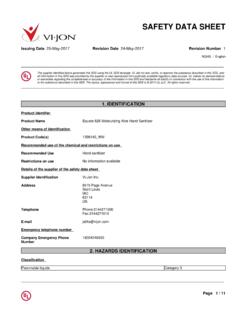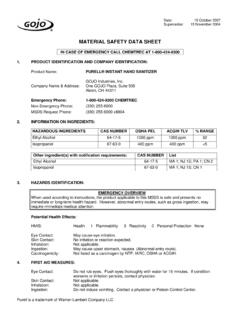Transcription of Evidence-Based Best Practices – Infection Control and ...
1 Evidence-Based best Practices Infection Control and Prevention Infection Preventionist The designated Infection Preventionist (IP) is responsible for coordinating all Infection Control and prevention program activities, and must have a basic knowledge of: Resident care Practices Infectious diseases, epidemiology and surveillance Practices Current immunization guidelines Disinfection and sterilization processes Adult education and communication methods The IP should complete a basic Infection Control training course, and have access to continuing education programs to advance his/her knowledge.
2 Infection Control Committee A multidisciplinary Infection Control Committee (ICC) is a key element of a facility s Infection Control and prevention program. The ICC should: Provide input on facility-wide Infection Control and prevention, policies and procedures, and surveillance processes Evaluate data obtained through surveillance Meet on a regular basis, at least quarterly or more frequently as necessary Include, at a minimum, the IP, facility Medical Director, nursing and administrative staff members, as well as representatives from dietary.
3 Housekeeping and maintenance The pharmacy consultant should attend on an as needed basis Evidence-Based best Practices Infection Control and Prevention Policies and Procedures Evidence-Based policies and procedures are the foundation of a facility s Infection Control and prevention program. Specific policies and procedures should include: Roles and responsibilities of facility staff, including the IP Identification and management of outbreaks of communicable diseases, including reporting to state or local authorities as required by statute Implementation of standard precautions, including hand hygiene and use of alcohol- based hand sanitizer Parameters for implementation and discontinuation of transmission- based precautions, including the use of personal protective equipment Environmental cleaning and disinfection.
4 Including terminal cleaning procedures when transmission- based precautions are discontinued Handling and disposal of biohazard waste and single use equipment Sanitizing multiple use equipment and supplies, such as blood glucose monitors, stethoscopes and pulse oximetry units Handling of soiled linen, including linen from isolation areas Collection and handling of laboratory specimens Management of exposures to blood-borne pathogens, such as needlesticks, etc Kitchen sanitation and safe food handling Immunization programs for staff and residents Planning for internal and external disaster situations Surveillance Essential elements of a surveillance system include.
5 Use of standardized definitions and listings of symptoms of infections Use of surveillance tools such as infections surveys, data collection templates, walking rounds throughout the facility Identify segments of the resident population at risk for Infection Identify processes or outcomes selected for surveillance Conduct statistical analysis of data that can uncover outbreaks of Infection Feedback of results of surveillance to primary caregivers so they can assess residents for signs of Infection Evidence-Based best Practices Infection Control and Prevention The facility s surveillance program should choose to either track the prevalence
6 Of infections (existing/current cases both old and new) ata specific point, or focus on regularly identifying new cases during defined periods of time. Education and Staff Training The facility should commit openly to staff education and identify methods for delivery. Essential conditions for training include: Availability of Infection Control expertise Appropriate facilities Dedicated budget and time during working hours Educations supports and documents should include the following concepts: Definitions, impacts and burdens of health care-associated infections (HAI) Major patterns for transmission of health care-associated pathogens, with a particular focus on hand transmission Hand Hygiene All health care workers, particularly those with direct resident contact, require continuous training on the importance of hand hygiene.
7 Staff education should include: Basic concepts of hand hygiene, include why, when and how to perform hand hygiene Correct techniques for hand washing and use of alcohol- based hand sanitizer The IP should assess staff compliance with hand hygiene, and implement correction actions. Regular monitoring is helpful to measure and demonstrate changes resulting from training. Use of Medical Devices The use of medical devices on more than one person increased the risk for infections .
8 Devices such as blood glucose monitors, blood pressure cuffs, electronic thermometers, stethoscopes are all devices that have the potential to spread Infection from one resident to another. Guidelines are in place the disinfection of these devices (CDC, FDA and CMS). Evidence-Based best Practices Infection Control and Prevention Critical items (such as needles, intravenous catheters, indwelling bladder catheters) are items that normally enter sterile tissue or the vascular system, or through which blood flows.
9 If single use equipment is not used, the item must be sterile when used, based on the CDC s sterilization procedures. Semi-critical items (such as thermometers, podiatry equipment, electric razors, blood glucose monitors) are objects that have contact with mucous membranes or skin that is not intact. These items require meticulous cleaning followed by high-level disinfection treatment using and FDA approved chemo-sterilizing agent or they may be sterilized. Non-critical items (such as stethoscopes, blood pressure cuffs and over-bed tables) are items that come into contact with intact skin or do not contact the resident.
10 These items require low-level disinfection by periodic cleaning, or when visibly soiled, with an EPZ disinfectant detergent or germicide that is approved for health care settings. Blood Glucose Monitors should be cleaned according to the manufacturer s instructions and the following guidelines: Clean and disinfect using germicidal wipes (EPA Reg. No. 67619-12 or equivalent)> A 1:10 bleach solution is also acceptable (1 part bleach to 9 parts water). Blood glucose monitors that are shared by multiple residents must be thoroughly wiped with disinfectant and allowed to air dry after every use and between every resident.
